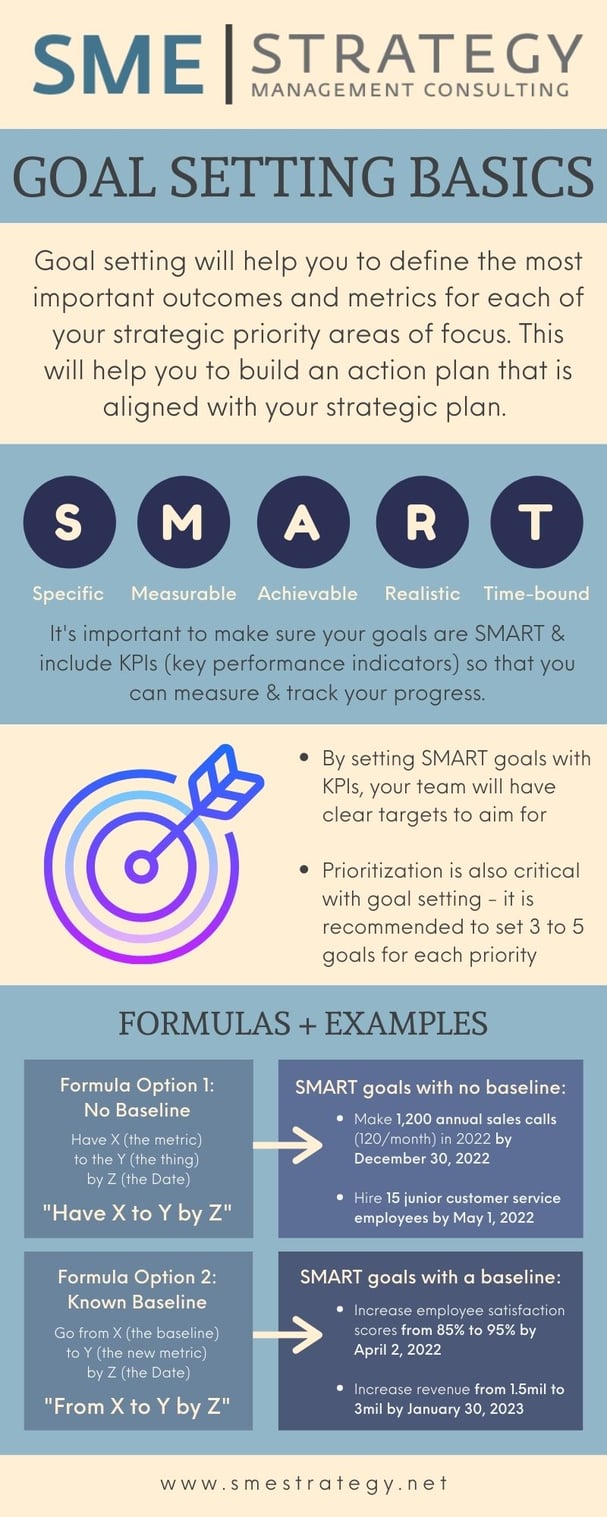The Ultimate Guide to Goal-Setting Strategies: Achieving Your Dreams
Introduction: Why Goal-Setting is Crucial
Goal-setting is a powerful tool for achieving success in both your personal and professional life. It provides direction, motivation, and a clear roadmap for reaching your desired outcomes. Without well-defined goals, you might find yourself drifting through life without purpose, but with the right strategies, you can stay focused, track progress, and overcome challenges.
This guide explores effective goal-setting strategies to help you take control of your future and turn your dreams into reality.

What is Goal-Setting?
Goal-setting is the process of identifying what you want to achieve and outlining the steps needed to accomplish it. Goals can be short-term, like completing a project, or long-term, such as pursuing a career or personal aspiration. Setting clear goals helps you prioritize your actions, stay motivated, and measure your progress along the way.
Benefits of Goal-Setting
-
Clarity: Clear goals help you focus on what truly matters.
-
Motivation: Goals give you a reason to keep pushing forward, even during tough times.
-
Accountability: Writing down and sharing your goals makes you more accountable for your actions.
-
Success: People who set goals are more likely to succeed in achieving their objectives.
Types of Goals: Understanding the Different Levels
There are several types of goals, each serving a unique purpose. Understanding these can help you create a more structured plan for achieving them.
1. Strategic Goals
Strategic goals are long-term, broad objectives that align with your overall vision for the future. These goals require careful planning and may take years to achieve. Examples include “become a successful entrepreneur” or “achieve financial independence.”
2. Tactical Goals
Tactical goals break down strategic goals into actionable steps. They are shorter-term and often have deadlines. For instance, “launch a business website” or “save $5,000 this year” are tactical goals that contribute to achieving a larger strategic goal.
3. Operational Goals
Operational goals are the most specific and measurable. These goals focus on the day-to-day tasks that need to be completed to make progress toward strategic and tactical goals. Examples include “finish a weekly report” or “attend a marketing workshop next month.”
Each type of goal plays an important role in your success. By balancing these three levels, you create a comprehensive goal-setting framework that drives continuous progress.

Key Goal-Setting Strategies
Successful goal-setting is more than just writing down what you want to achieve. It requires a strategic approach. Here are some proven strategies to help you set and achieve your goals effectively:
1. Use the SMART Goal Framework
The SMART framework is one of the most popular methods for setting clear and actionable goals. SMART stands for Specific, Measurable, Achievable, Relevant, and Time-bound. Each element of this framework helps ensure that your goals are well-defined and realistic.
-
Specific: Be clear about what you want to achieve.
-
Measurable: Quantify the goal so you can track progress.
-
Achievable: Make sure the goal is realistic and attainable.
-
Relevant: Ensure the goal aligns with your values and priorities.
-
Time-bound: Set a deadline for completing the goal.
For example, instead of saying, “I want to get fit,” a SMART goal would be, “I will exercise for 30 minutes, five times a week, for the next three months.”
2. Break Goals into Smaller, Manageable Tasks
Big goals can feel overwhelming. To make them more achievable, break them down into smaller tasks. Each small task completed is a step toward reaching your larger goal, helping you build momentum and maintain motivation.
Example:
-
Large Goal: Write a book.
-
Smaller Tasks: Outline the chapters, write 500 words each day, edit one chapter per week.
Breaking down your goals also makes it easier to track progress and celebrate small victories along the way.
3. Prioritize Your Goals
Not all goals are of equal importance. Learn to prioritize based on urgency and impact. Focus on the goals that will move you closer to your long-term vision and have the greatest impact on your success.
How to Prioritize:
-
Identify which goals will bring the most value.
-
Consider the time and effort required for each goal.
-
Focus on one or two high-priority goals at a time to avoid spreading yourself too thin.
By prioritizing your goals, you ensure that you’re not wasting time on less important tasks and can stay focused on what truly matters.

4. Write Down Your Goals
Writing your goals down makes them tangible. When you write something, you’re more likely to take it seriously and take the necessary steps to achieve it. Keep your written goals somewhere visible, such as in a planner, on your wall, or in a digital document.
Benefits of Writing Your Goals:
-
Clarity: Writing down your goals forces you to think them through clearly.
-
Commitment: Putting your goals in writing shows that you’re committed to achieving them.
-
Accountability: Having a written record helps you stay accountable and track your progress.
5. Review and Adjust Regularly
Life is unpredictable, and sometimes goals need to be adjusted. Set aside time to review your goals regularly and adjust them as needed. This helps you stay on track and adapt to any changes in your circumstances.
Tips for Reviewing Goals:
-
Set a weekly or monthly reminder to review your goals.
-
Reflect on what you’ve accomplished and what’s still pending.
-
Adjust timelines and priorities if necessary.
6. Visualize Success
Visualization is a powerful technique that can enhance motivation and focus. Take a few moments each day to picture yourself achieving your goals. Visualizing success helps you stay committed and reinforces the belief that your goals are achievable.
7. Stay Consistent and Take Action
Consistency is key to achieving your goals. Set aside dedicated time each day or week to work toward your objectives. Even small actions can add up to big results over time.
Actionable Tips for Consistency:
-
Break your goal into daily or weekly actions.
-
Hold yourself accountable by setting deadlines.
-
Reward yourself when you complete a task or reach a milestone.
Common Goal-Setting Mistakes to Avoid
While goal-setting is essential, there are some common mistakes that can hinder your progress. Avoiding these pitfalls can help you stay on track and achieve your objectives.
1. Setting Unrealistic Goals
Setting goals that are too ambitious can lead to frustration and burnout. It’s important to set goals that challenge you, but also ensure they are achievable within the given timeframe.
2. Neglecting to Review Goals Regularly
If you don’t review and adjust your goals, you might lose sight of what’s important. Regular check-ins help keep your goals relevant and ensure you stay focused on your priorities.
3. Focusing Only on Results
While it’s important to have end goals, focusing too much on the outcome can lead to disappointment if things don’t go as planned. Instead, enjoy the process and take pride in the small wins along the way.
Frequently Asked Questions (FAQs)
Q1: How do I know if my goals are realistic?
A1: To determine if your goals are realistic, consider the time, resources, and effort needed to achieve them. Break them down into smaller tasks and evaluate if each step is attainable.
Q2: Can I set too many goals at once?
A2: Yes, setting too many goals at once can overwhelm you. Focus on a few key goals at a time to ensure that you can dedicate enough time and energy to each one.
Q3: How often should I adjust my goals?
A3: Review your goals at least once a month. If necessary, adjust them based on your progress, changes in circumstances, or shifts in priorities.
Q4: What if I don’t achieve my goal on time?
A4: Don’t be discouraged. Reevaluate your plan, adjust the timeline if needed, and continue to take consistent action toward your goal.
Conclusion: Take Action Today!
Goal-setting is an essential skill for success, but it requires more than just writing down what you want to achieve. By using the right strategies—such as the SMART framework, breaking goals into smaller tasks, and staying consistent—you can ensure steady progress toward your dreams. Remember, goals provide clarity, motivation, and accountability. Take the first step today and start setting goals that will change your life for the better.
With dedication and perseverance, your goals are within reach—it’s time to start working on them!








